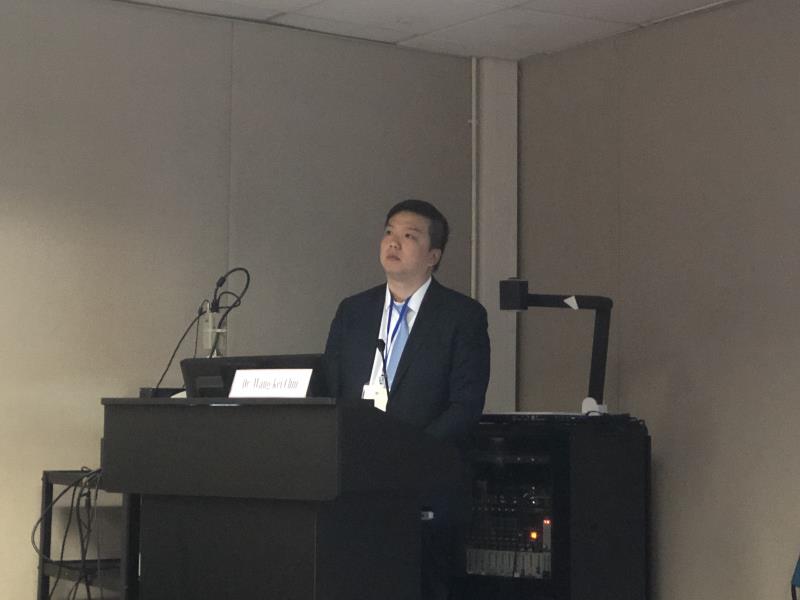
Denosumab can be of benefit to patients with unresectable giant cell tumour of bone (GCTB) and those who are likely to experience significant morbidity after surgical resection of GCTB.
“Patients who are likely to experience significant morbidity after surgery are those with GCTB in the pelvis, spine or sacrum,” said Dr Calvin Wang-Kei Chiu of the Department of Orthopaedics & Traumatology, Prince of Wales Hospital (PWH), at the 3rd Sarcoma Masterclass organized by the Chinese University of Hong Kong (CUHK).
“Denosumab is also a good option if wide resection is planned, because its preoperative use can facilitate resection by making the tumour harder and firmer, reduce vascularity, and reduce symptoms while waiting for the prosthesis for reconstruction to be made,” he continued.
“In patients planned for curettage or intralesional surgery, however, I would use preoperative denosumab for 1 month at most, or no denosumab at all,” he added. “Recent studies suggest that preoperative denosumab may increase the rate of local recurrence [LR] in patients with GCTB treated with curettage.”
In 2013, the US FDA approved denosumab for use in unresectable GCTB or operable GCTB in which surgical resection is likely to result in significant morbidity. Despite its higher cost compared with bisphosphonates, denosumab is increasingly used in patients with resectable GCTB because of its tumour downstaging effect, which reduces the need for major surgeries, and its safety profile. [Lancet Oncol 2013;14:901-908]
In a recent study, a short preoperative course of denosumab was found to facilitate surgery in certain operable cases, with a downstaging effect allowing some patients to undergo curettage, although local control rates were unlikely to improve. [Bone Joint J 2019;101-B:170-177]
“However, recent studies suggest that denosumab may increase the risk of LR in patients treated with curettage,” noted Chiu.
In a retrospective study in 408 patients, LR rate was 60 percent in 25 patients treated with curettage and denosumab, compared with 16 percent in 222 patients treated with curettage alone. [J Bone Joint Surg Am 2018;100:496-504] Similarly, a small study showed LR in five of 12 patients treated with preoperative denosumab followed by curettage and cryotherapy, compared with only one of nine patients treated with surgery alone. [Clin Orthop Relat Res 2018;476:1783-1790]
“Another study reported difficulty in intralesional surgery after preoperative use of denosumab, with no increase in LR risk,” said Chiu. “The researchers suggested that in patients with a large tumour, preoperative use of denosumab can aid resection without tumour spillage.” [Clin Orthop Relat Res 2018;476:1773-1782]
In patients with pelvic and sacral GCTB, denosumab therapy with curative intent reduced LR rate when used for the long term (0 percent vs 33 percent in patients who stopped treatment). In those who received denosumab before and after surgery, LR was reduced with wide resection vs curettage (0 percent vs 62 percent). [J Orthop Sci 2019, doi: 10.1016/j.jos.2019.05.003]
“In patients with Campanacci stage 3 GCTB with pathological fracture, the use of denosumab is still controversial, and en bloc resection offers a lower rate of LR,” said Chiu. [Bone Joint J 2018;100-B:1626-1632]
In Hong Kong, data from 47 patients with lower extremity GCTB treated with curettage at PWH in 1996–2016 showed that adjuvant bisphosphonates did not reduce LR after ≥10 years of follow-up. “Surgical techniques remain the key in reducing LR,” said Chiu. [HW Lau, et al, International Society of Limb Salvage Conference 2019]